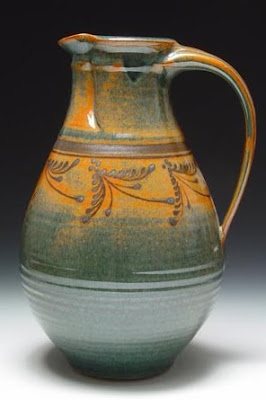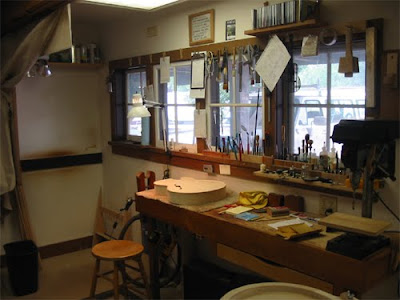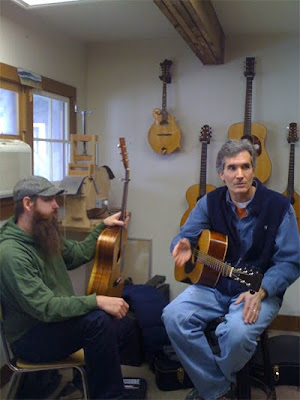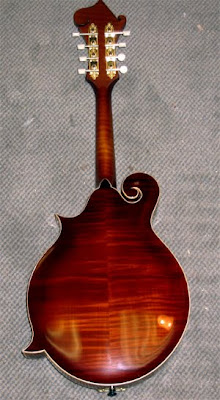
Maybe next week I'll upload video of adding the handle to the lid and trimming the foot on the casserole. Right now, I've got a warecart to finish...



No, really. Not necessarily a winner, but a wiener sent in from Amanda, owner of the most lovely malamute, Kina, seen here...




Sadly, the judges had to note a manditory deduction of 1 point for the non-matching front right paw. But the Americans still lead with a solid "9"!
In an interview following the event, Breeze said "I and Ariel may just be the totally greatest synchronized sleeping team in, like, the history of the event and stuff."
I didn't respond. It's common wisdom to let sleeping dogs lie.




One aspect of Mark’s clay work that I find fascinating:

Mark’s been much published. It seems most of what people say about him ends up coming back around to discussing the precision of his work – and that usually written with some mention of his math background (The other part of his academic training). That precision is noteworthy, praiseworthy, and (as Breeze would say) “stuff”.
To me, what’s more amazing about that precision, though, is not the implied difficulty of execution. Yes, I can certainly appreciate that. No, to me what’s remarkable is that in the final analysis, Mark’s work has become animated by that tight control to such an extent that the process has itself become transparent. The decoration serves the piece’s unified whole rather than merely calling attention to itself as a “show”.
But even after all of those considerations, it was a very simple thing about Mark’s work that so strongly influenced me. Mark and I both make shallow bowls – bowls so shallow that essentially the backside is more like that of a plate than a bowl. And as such, I hadn’t really considered decorating what is, for all practical purposes, not seen – the back of the bowl.
Then one winter Dar bought me one of Mark’s bowls for a gift. It was decorated on the back. It was just so … right. That detail disclosed to me a guy who loves what he does so much that he – from all appearances – was pleasing himself by decorating what mostly only he would have seen. It showed a craftsman whose mind “good enough” would never even cross. How would he answer, “Well, who’s going to see that anyway?” The simple, obvious answer is: “He would.”
I’ve decorated the back of my bowls ever since. Oh, I’ve got a few decorating techniques that literally don’t allow me to do much decorating there – but even then I always try to figure out some means of expressing myself on the back sides of my shallow bowls.
You can contact Mark via email at: marknaf@rtecexpress.net
His work is available through Bier Gallery or Charlie Cummings Gallery
 Wooden Music has the strongest musigravitational-pull-per-mass ratio of any music store in the universe. I honestly don't know how Jim gets any work done because every musician for fifty miles is drawn to hanging out there as strongly as I am.
Wooden Music has the strongest musigravitational-pull-per-mass ratio of any music store in the universe. I honestly don't know how Jim gets any work done because every musician for fifty miles is drawn to hanging out there as strongly as I am.








 picture added just because blog posts should have pictures!
picture added just because blog posts should have pictures!
"Yawn...Oh yes, another late 20th century American piece of ceramic -- an
era of wild abandon when every Tom, Dick, and Harry Potter was setting up shop
in his garage or barn and making stuff because there was no regulating agency
telling them that they couldn't --- and there was a HUGE market of equally
unschooled middle class buyers predisposed to home decorating and gift buying.
They all thought of themselves as 'artists'. *Chortle*



As a young student making my first pots, I struggled (as seems common with beginning potters) at editing my work as a potter. I think that that editing struggle had its genesis in several factors:
That self editing started – in my mind – to take shape after one visit to the college library during which I picked up an issue of Ceramics Monthly. There, on the back cover, was an advertisement for Cedar Heights Clay Company featuring a glossy full-page photo of a marvelous canister set created by Richard Aerni.




First, I was surrounded and supported by good and generous potter friends...Michael Frasca foremost of all, and Brenda Brown-Tarbell and Greg Siegel also noteworthy, but there were plenty more, who gave me inspiration and lots of helpful conversation.
Secondly, like Mayo in _An Officer and a Gentleman_..."I had nowhere else to go!" I was all-in in the pottery game...no fallback plan. I had to make it work, or else...the gutter. So, I was young, stupid, hardheaded and persistent...When Mike and I did the first ash glaze tests, it was love at first sight. We were starting to spray glazes and slips in the studio at that time, and that fit right in too. That cannister set was among my first ash-glazed pots, certainly in the first ten...that they came out that well was something of a miracle.